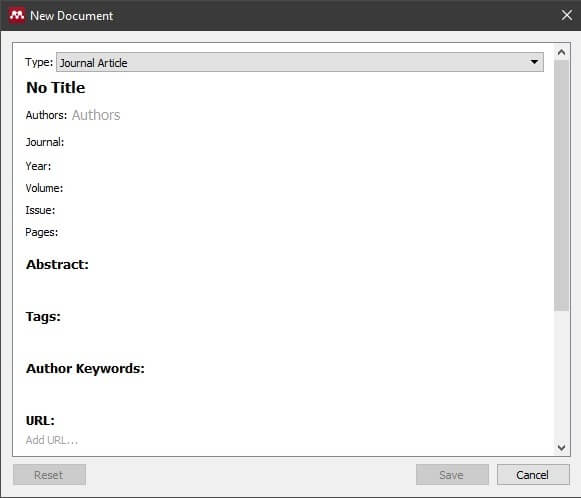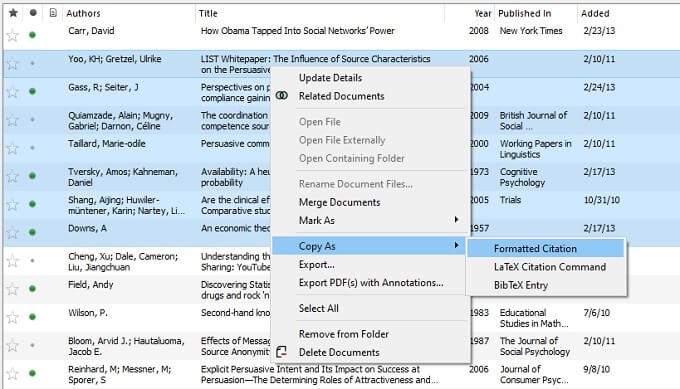If you’ve never heard of Mendeley or want to find out how to get the most out of it, here’s how this software can boost your research skills.
What Is Mendeley Desktop?
Before we go any further, we need to clear up exactly what Mendeley Desktop is and what it isn’t. Mendeley is the desktop application component of the Mendeley research ecosystem. This software lives on your desktop computer and is separate from the web interface or the mobile applications. Of course, the Mendeley mobile applications are an important part of the overall system too. The cloud service is the glue that ties it all together. We’ll touch on these other components of the overall service as well, but the main topic at hand is the desktop application.
Mendeley: Free vs Premium
In the past, the free version of Mendeley came with some rather serious limitations. These days however, the main difference between the free service and the premium service is the amount of cloud storage you get. Free users get two gigabytes of cloud storage whereas premium users get ever-increasing amounts depending on how much they pay. Free users also have the ability to create five private groups that can have up to 25 collaborators. We’ll talk about this group collaboration feature a little later. It’s very unlikely that independent researchers or students only pay for the premium version. If you need larger collaboration groups or a lot of cloud storage, you are most likely going to have some sort of institutional license for Mendeley since you are probably working for a university or research institution. Remember to check with your institution before you pay yourself.
The First Step: Ingesting Sources
At its core, Mendeley Desktop is a reference management tool. You can’t do anything with the program if you don’t have a database of sources. Since it can be tedious to manually enter the details of every source, Mendeley Desktop has some neat tools to help speed up the process. Most academic articles come in the form of a PDF document. You can designate specific folders on your hard drive to be watched by Mendeley Desktop. Any PDFs that you copy into this folder will automatically be ingested into your database. Mendeley will attempt to extract the right information from the document automatically, even if each PDF has a very different format. You do need to make sure that the information is correct, but this will save a lot of time in the long run. If you do need to enter a source manually, you can sometimes get away with just typing in the title and then marking the source as “needing review”. Mendeley will then check the title against Google Scholar, and automatically fill in all the information if it finds a match. You should also make sure to create custom lists for your sources. When you first enter new research sources in Mendeley it all goes into an unsorted pile. That’s not a great way to leave things if you’re working on multiple papers or projects.
Annotations & Notes
After you’ve loaded a new research paper into your Mendeley database, you can highlight important pieces of text and leave notes for yourself and for team members. This is a critical feature for anyone doing academic research. As you do your research, hundreds of sources can pile up. It’s important to highlight all the parts relevant to your own paper and keep an organized track of your thoughts at the time, while reading the research of others.
The Best Part of Mendeley Desktop Is Automated Citation
Ask anyone who’s had to do academic writing, and they’ll tell you one of the most tedious parts of this writing is having to do citations and bibliographies at the end of the piece. One of the best things about Mendeley Desktop is the fact that you can automate almost all of your citation chores. All you have to do is be diligent about collecting all of your research sources in your Mendeley database. Then when you’re writing your paper, you can use the plugins from Mendeley Desktop in your word processor to insert citations as you go. The real magic comes when you’re done and have to put together your list of sources or bibliography. If you put all the citations into your piece as you went along, you only have to click a single button to automatically generate your entire list of sources in the correct academic citation format. This is not that big a deal with shorter papers, but if we’re talking a full thesis or a long research paper with hundreds of sources this feels like the best feature ever created.
Mendeley Is Great For Teams
Mendeley Desktop is perfect for students who are working on research projects independently as well as academics who write and publish alone. However, these days the trend is overwhelmingly towards co-publishing with other academics. It’s “publish or perish” after all. Mendeley has some excellent collaboration tools that allow people to collectively collect literature, share annotations and otherwise share the load of research. Not only does this mean that you’ll get the work done more quickly, it also means that you can learn from other people in the team who are more experienced researchers than you.
Mendeley Can Help You Find Important Papers
No matter which academic discipline you practice, it’s important to always stay up-to-date with the latest research. Mendeley is an incredibly powerful tool for finding new papers that you should be reading. The feature is called Mendeley Suggest and uses your personal profile along with a system that monitors which papers are being read and cited the most, to make suggestions to you when it comes to your reading list. You’ll see articles that are having a significant impact in your field that you probably should read. This is a huge leap ahead over the old style of doing a literature review. Of course, you shouldn’t rely on something like Mendeley Suggest by itself.
The Most Essential Research Tool In Your Arsenal
There’s a reason academic publishing giant Elsevier bought Mendeley and why it’s been so popular over the years. This piece of software takes a lot of the tedious sting out of research and academic writing. Not only will this make you a more productive academic, it will also make you more motivated to actually write! Knowing that the tedious parts of the job are automated or much faster to do means you can have a sense of excitement about your research writing instead of a sense of dread. That’s far more than half the battle.







